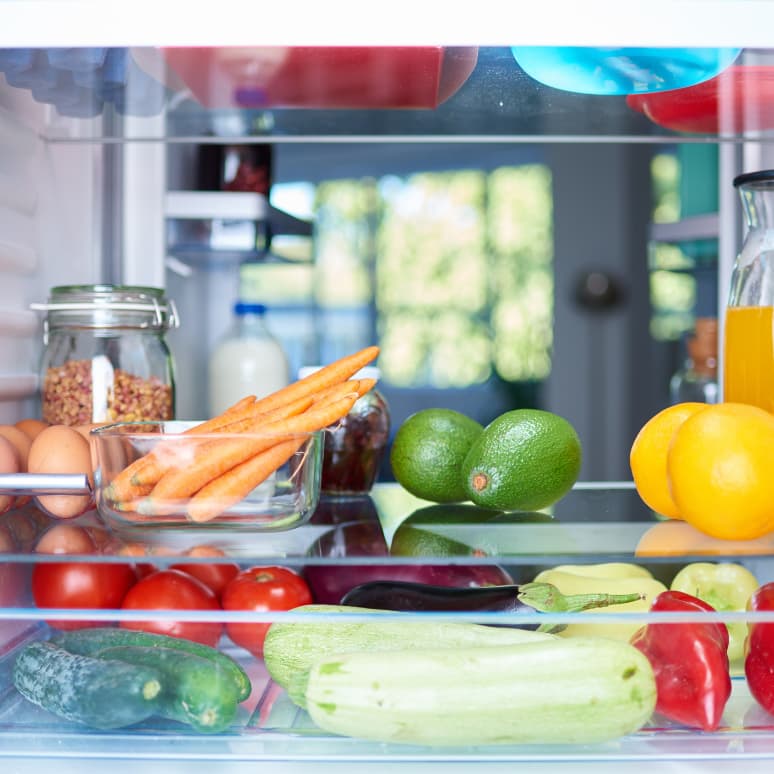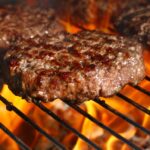The length of time it takes for a fridge to get cold depends on several variables. We’ll walk you through each of those variables and tell you what you can do to speed up the process and make your fridge cold as fast as possible. Just how long does it take a fridge to get cold?
Refrigerator Cooling Times by Brand and Type
| Brand | Type | Cooling Time |
|---|---|---|
| General Electric | Bottom Freezer | 24 hours |
| General Electric | French Door | 24 hours |
| Whirlpool | Bottom Freezer | 24 hours |
| Whirlpool | Side by Side | 24 hours |
| Whirlpool | Top Freezer | 24 hours |
| Whirlpool | Mini Fridge | 4 hours |
| LG Electronics | Bottom Freezer | 2-3 hours |
| LG Electronics | French Door | 2-3 hours |
| LG Electronics | Side by Side | 2-3 hours |
| Frigidaire | Side by Side | 8-12 hours |
| Frigidaire | Top Freezer | 8 hours |
| Frigidaire | Mini Fridge | 4 hours |
| Maytag | Bottom Freezer | 24 hours |
| Maytag | Side by Side | 24 hours |
| Maytag | Mini Fridge | 4 hours |
| Samsung | Bottom Freezer | 2 hours |
| Samsung | French Door | 2 hours |
| Samsung | Side by Side | 2 hours |
| KitchenAid | Bottom Freezer | 24 hours |
| KitchenAid | French Door | 24 hours |
| KitchenAid | Side by Side | 24 hours |
Factors that Impact How Long Refrigerators Take to Cool
Size
Is the refrigerator large or small in size? In other words, does it hold several cubic feet of goods, or is it a small version, holding just a few items, created for a small space like a college dorm or studio apartment? Smaller refrigerators tend to cool faster than large refrigerators because there’s less space that has to be cooled, resulting in less time needed for the cooling to take place.
Storage Area Temperature
Where are you storing the refrigerator? Places like the garage in the summertime will take longer for the refrigerator to cool than in a well air-conditioned interior space that’s significantly cooler.
Outside Temperature
If you’re receiving a new refrigerator that’s coming to you on a delivery truck, you’ll want to consider the outside temperature. A refrigerator that’s been transported to you on a delivery truck in the dead of winter will take less time to cool than a refrigerator that comes to you on a delivery truck in the peak of summer.
Age and Condition
What is the age and condition of your refrigerator? Newer refrigerators are made to be more efficient and will likely cool faster than say a 20-year-old refrigerator. Is the refrigerator in excellent operating condition, or is it limping along? Its condition also matters for how fast it cools the inside of the refrigerator.
Empty vs Stocked A refrigerator that’s full of already cooled food items will cool faster than one that is totally empty because the temperature of the food items helps to bring down the overall internal temperature of the refrigerator.
How Often the Door is Opened
If you want your refrigerator to stay cool or to cool more rapidly, you’ll want to keep the refrigerator door shut. Every time the door is opened, it allows the cool air to escape and warm air to fill its space.
Distance from the Wall
How far your refrigerator is placed from the wall will also be a factor in how fast your refrigerator cools. If it’s pressed right up against the wall, it will take longer for it to cool than if it’s pulled a few inches away from the wall and allows proper air circulation to reach all the way around the refrigerator.
How to Speed Up the Cooling Process
Sometimes there’s just not time to wait for your refrigerator to cool, and you need it done as quickly as possible because there is no other solution to keep your food cool. Here are some things you can do to speed up your refrigerator’s cooling process:
- Keep Door Closed: Keeping your refrigerator door closed while it’s cooling will help it to cool more quickly and work in the most efficient way possible. It will keep the cool air in and any warm air out.
- Ensure Good Airflow: Make sure the refrigerator is at least 2 inches away from the wall so that it has the proper airflow behind it that it needs to work.
- Keep the Coils Clean: An annual dusting will help to keep the coils clean and your refrigerator running well, cooling your food quickly.
- Plug it in Properly: Properly plugging your refrigerator in might seem straightforward, but it’s one of the most important aspects of helping your refrigerator get cold as fast as possible.
- Room Temperature: Consider cooling your room temperature, if possible, to help the refrigerator work more efficiently. For example, if you’re cooling a refrigerator in the hottest part of the summertime and the room where the refrigerator is being placed has air conditioning, turn on the air conditioning to bring the room temperature down so the refrigerator doesn’t have to work so hard to cool itself.
- Add Ice: If you have access to ice, consider placing a large container of ice inside the refrigerator to help it cool faster. Keep in mind that the ice will melt, so you’ll want to use a container that can hold liquid without leaking.

How to Know When Your Refrigerator Is Cool Enough to Store Food
According to the FDA, your refrigerator needs to be 40°F or less to safely store food, and your freezer should be 0°F to safely store food. Check to make sure your refrigerator and freezer reach and maintain this temperature.
If your refrigerator and freezer don’t have a built-in thermometer, you can buy one specifically to use for maintaining the internal temperature.
What if Your Fridge is Not Cold Enough?
If your refrigerator isn’t cold enough and is properly plugged in, it could be because of a lack of electricity or it could also be the fault of refrigerator components not functioning properly.
How Long a New Fridge Takes to Cool
The amount of time it takes for a new fridge to cool varies greatly depending on the brand of refrigerator as well as its size.
- Mini fridge: 4 hours
- Standard Refrigerator: 2 to 24 hours
- Freezer: 12 to 24 hours
Tips for Keeping Food Cold Without a Working Fridge
We’ve all experienced a power outage and perhaps a refrigerator that doesn’t work for whatever reason. Regardless of the situation, at one time or another, it’s possible that you’ll need to figure out how to keep food cold without a working refrigerator. Here are some ideas:
- Don’t Open the Door: The best thing you can do is keep the refrigerator and freezer doors closed. This will help to keep the cold air in and the hot air out, extending the time your food will last.
- Use Ice: Consider using ice chunks or ice cubes to keep your food cold. If you have a little extra space, place it in a container and put it right inside to help keep food cold. Replace the ice when it melts.
- Use the Freezer: If your refrigerator has a freezer that’s still functional, consider moving as much food as you can from the refrigerator to the freezer. When you put the cold food together, it helps to insulate it and keep itself cold.
Conclusion
With these tips and insights, you’ll be better equipped to understand and manage the cooling process of your refrigerator, ensuring your food stays fresh and safe for consumption.


